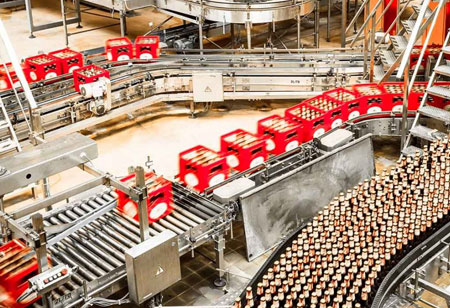THANK YOU FOR SUBSCRIBING
Be first to read the latest tech news, Industry Leader's Insights, and CIO interviews of medium and large enterprises exclusively from Food and Beverage Tech Review
Exhibiting the Flexibility of Blockchain in CPG Manufacturing Design
Blockchain technology is often considered as an expendable option in terms of transaction handling and exchange of data.

By
Food and Beverages Tech Review | Thursday, August 13, 2020
Stay ahead of the industry with exclusive feature stories on the top companies, expert insights and the latest news delivered straight to your inbox. Subscribe today.
With cutting-edge innovations in machine design and blockchain, the securing of data transactions and tracking of data movement has become natural.
FREMONT, CA: The bitcoin technology with an underlying security system, blockchain, is the ideal solution for secure handling of data generated from machine parts manufacturing process. It also provides tamper-resistant transmission of the data along with perfect traceability to all the entities involved in the production.
Blockchain technology can be primarily applied to modifications and parts design. Examples of blockchain in the food and beverage industry include food processors, OEMs, and its unique parts suppliers’ design or to make changes to the machine to incorporate new processes and packaging.
The technology can also be utilized when designing a new product. While the processor’s master chef collaborates with clients’ chefs about product recipes to packaging, the information shared among them needs to be incognito and secured away from prying eyes. The data also needs to be shared among the team of chefs without allowing any leeway.
Blockchain technology is often considered as an expendable option in terms of transaction handling and exchange of data. With its blocks, each representing a data concerning transactions carried out by the members who exist in the network. Every block has a specific data set, timestamp, a cryptographic hash and the hash of the previous block, linked through unique algorithms. These features make it impossible for the information in the block to be altered without modifying all the previously existing blocks and alerts all the members in the network.
In any manufacturing process, especially among smart systems, a significant percentage of the operations function by sharing, exchanging with many engineering solutions and information management systems. The data generated and shared throughout a product’s lifecycle needs to be secured against tampering, theft, and corruption. The data needs to be identifiable from the source, meaning a data tag is a necessity to stay up to date.
Even though setbacks exist, blockchain assists in various streams of the manufacturing process. In cases like transferring of recipes from the head chef for mass production, blockchain guarantees security and authenticity of the data and the confidence that it is not tampered with. Blockchain technology possesses the quality of data protection and tracking, but it showcases setbacks when it comes to the quality and standardization of data.
The setbacks are mainly due to the varying formats of data. With data protection against tampering during the entire product lifecycle being the goal, blockchain application seems perfect. When digital certificates and signatures are observed, the formats of the same products vary, some supportive to the data format and some not. The necessity for a standardized or a signature similar to that of the product is high.
Another problem which needs tackling is the inconsistent file formats, which cannot be matched with digital signatures making tracking and tracing of data transpositions tough to handle.
Blockchain here enacts as the central repository or registry that protects the transaction data and all information related. As a data repository, blockchain reserves support any data innumerable file formats. It not only secures and stores the data but also keeps track of all the data transactions.
I agree We use cookies on this website to enhance your user experience. By clicking any link on this page you are giving your consent for us to set cookies. More info







